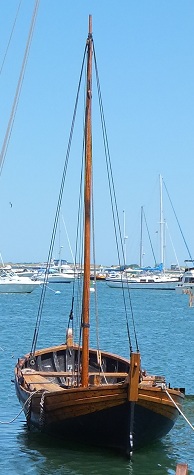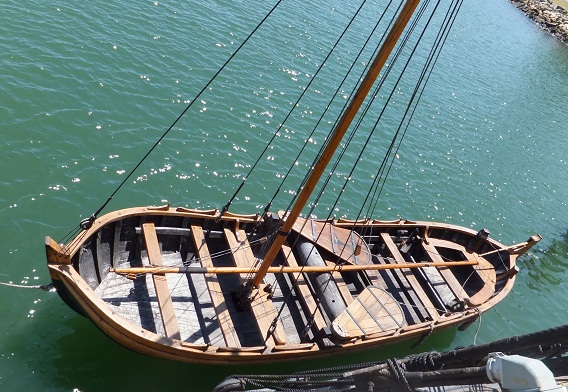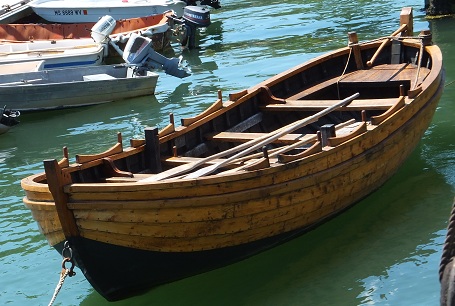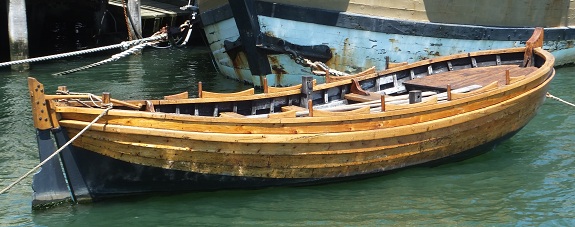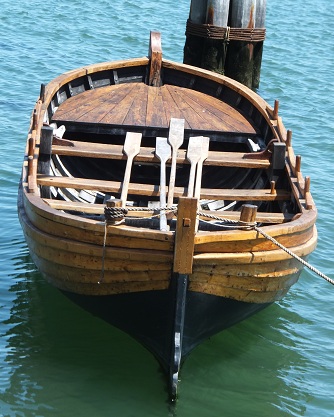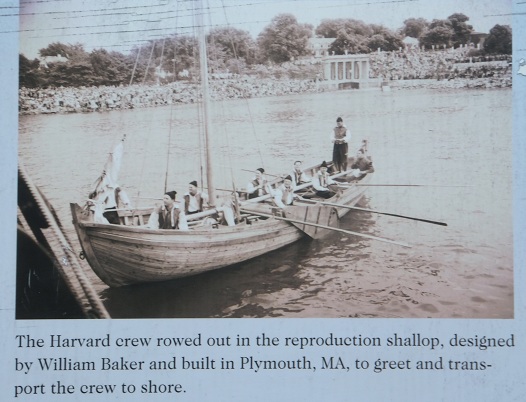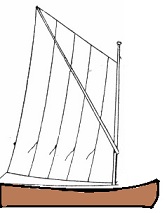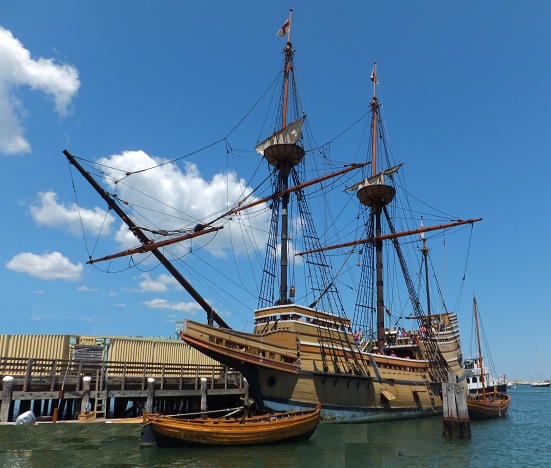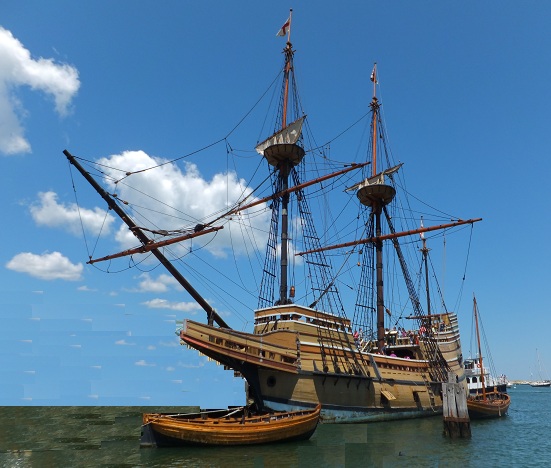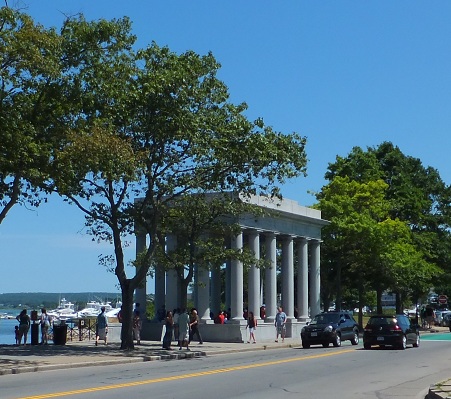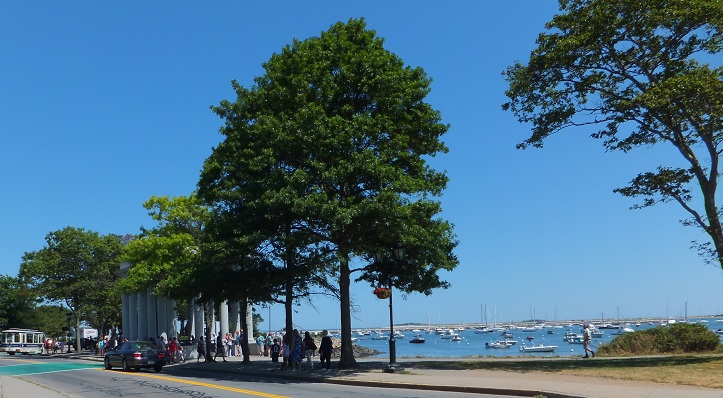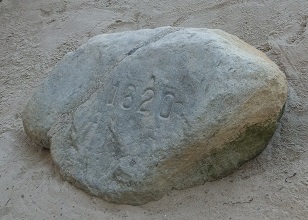Vacation 2012
10 July - 9 August
a tour of places in eastern USA

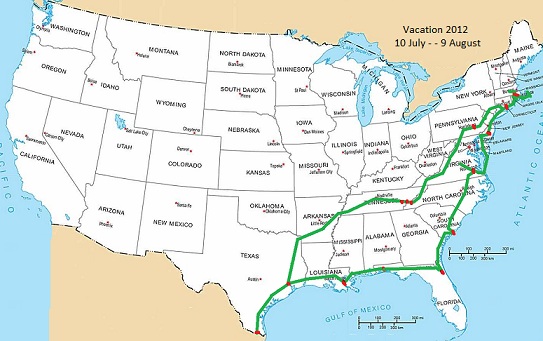
the R-pod travel trailer - - - - - - - - - - - - - - - - - - - - - - - - - - - a map of our travels
Page 8
Sunday - 22 July 2012
~ Mayflower II in Plymouth MA ~
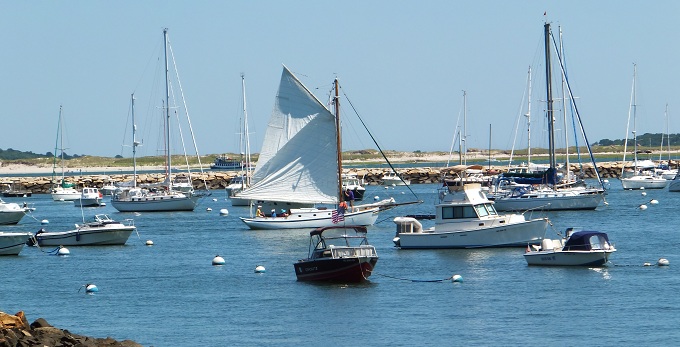
Plymouth Harbor - Mayflower II is off to the left
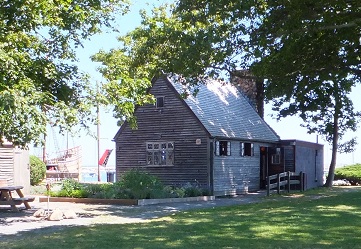 -
- 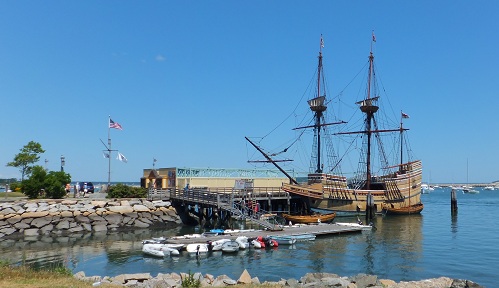
Saltbox style house used as a souvenire store. - - - - - - - - - - - - - - - - Mayflower II dock and display area
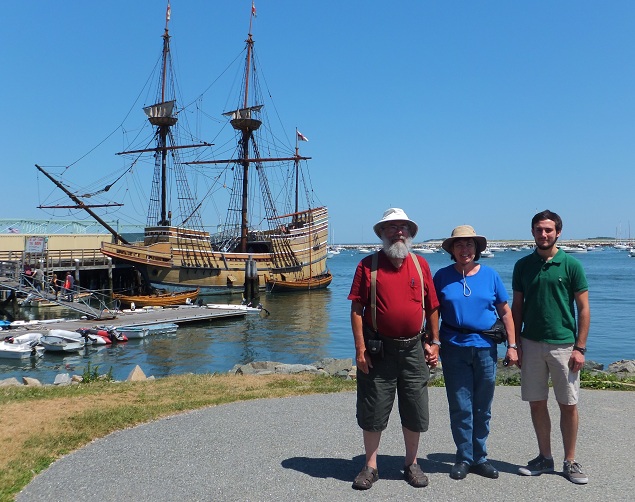
A friendly fellow tourist took our picture in front of the Mayflower II
The Mayflower II was constructed in England. She sailed from Plymouth England April 20, 1957. Arrived Plymouth, MA June 13, 1957.
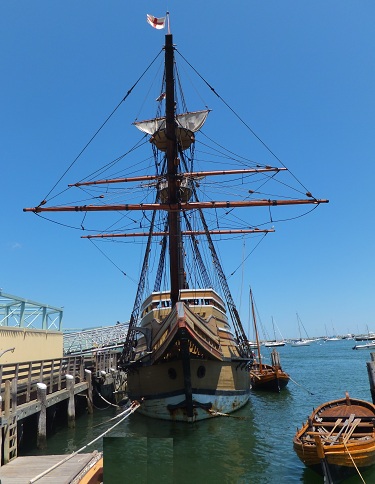
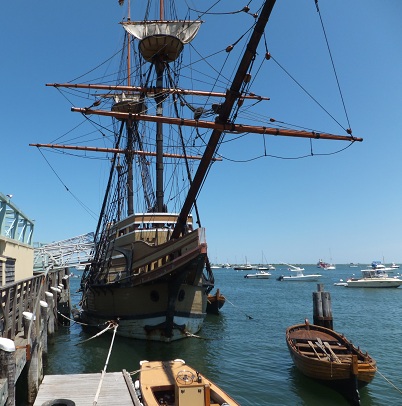
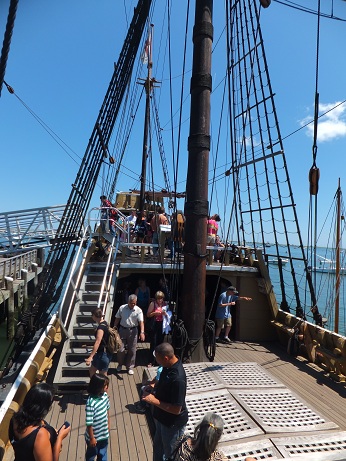 -
- 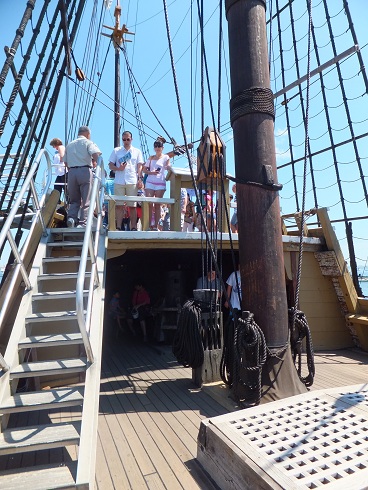
Looking aft along the main deck. To where the ships officers lived.
Note the huge blocks just aft of the Main Mast. (right picture)
These are for the Main Yard halyard - used to raise that yard.
Since the yard is in the raised position, the blocks are close together.
The halyard line (rope) would be led aft to the verticle windless to get enough power to raise the heavy yard and sail.
Each mast has its corresponding pair of large blocks for their halyards.
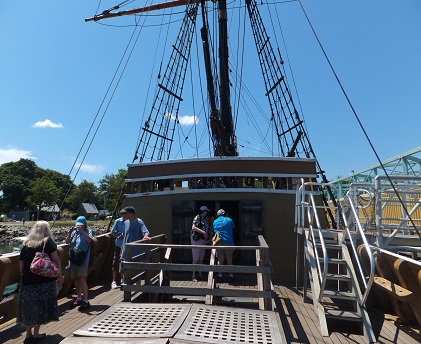
Looking forward at the Focsle, where the sailors lived.
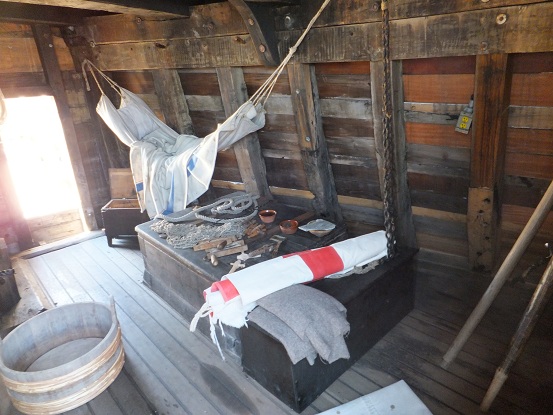
In the Focsle (shortened from Fore Castle)
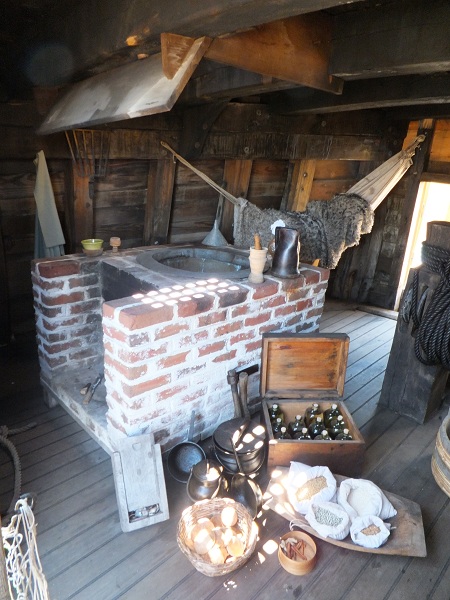 -
- 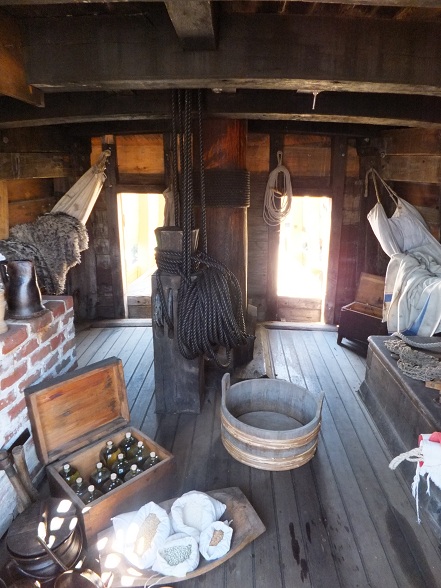
Galley - in the Focsle
~ ~ ~ Tween Deck - below the main deck and above the cargo hold ~ ~ ~
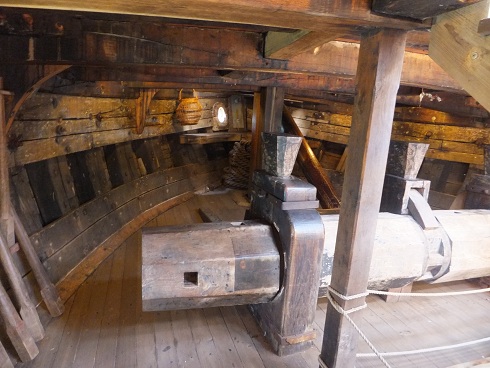
Forward horizontle windless - in tween deck area, below the main deck.
In good position for raising an anchor.
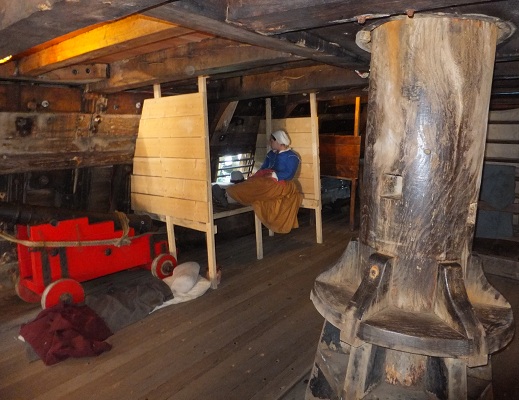
The tween deck - where the passengers lived. Vertical windless on the right.
This windless continues on up through the deck to the main deck level.
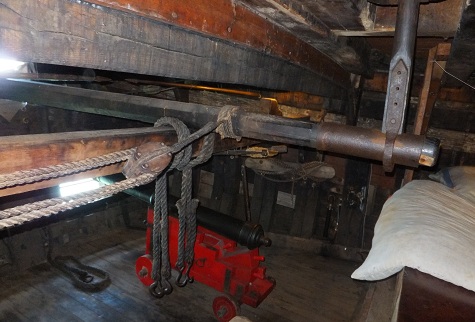
Main steering equipment.
The Tiller with the bottom of the whipstaff attached to the end of the tiller, which is attached to the rudder.
The whipstaff continues up through the deck via a fulcrum to the main deck cabin,
where the steersman controls the rudder.
(In some ways like the linkages between the foot pedal on cars to the carburator throttle controls
... then I am dating myself, cars have not had carburators in years.)
At this time in maritime development the ships wheel had not yet been invented.
The block and tackle is relieving tackle to help steer in stormy conditions
when the whipstaff is not strong enough to control the tiller.
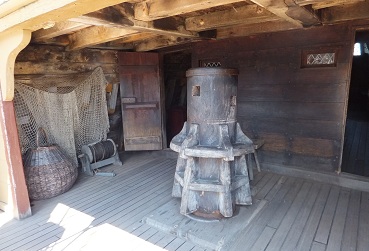
Vertical windless on the main deck.
This could be used to hoist the main yard, from which the main sail hung.
 - - - - - - - -
- - - - - - - - 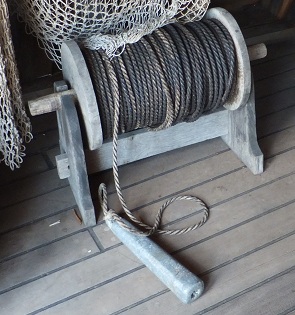
lead lines - necessary pieces of navigational equipment.
For finding depth of water as well as getting a sample of the bottom in the dimple at the bottom of the lead.
On the LEFT a shallow water lead which is swung by the leadsman - - - On the RIGHT a dipsey lead used in deeper water.
and cast forward as the ship is slowly moving forward and read - - - - - - - - - The Dipsey lead is lowered when the ship is attempting
when the ship comes to the place where the ship is overhead. - - - - - to be still holding position.
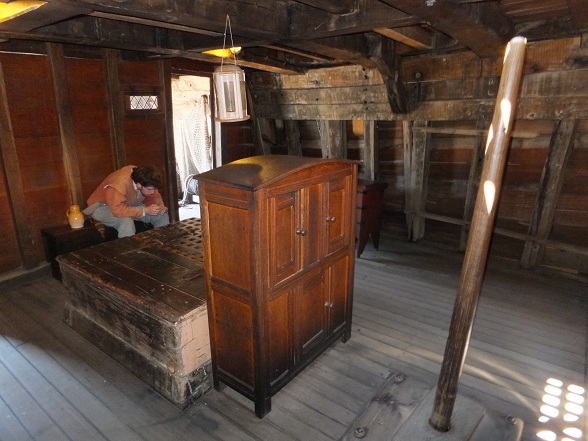
Great Cabin looking forward. Whipstaff at right.
In front of whipstaff a compass would be visible in the upright chest (binnacle).
Note hatchway in front of binnacle and the chest upon which the crew member is sitting.
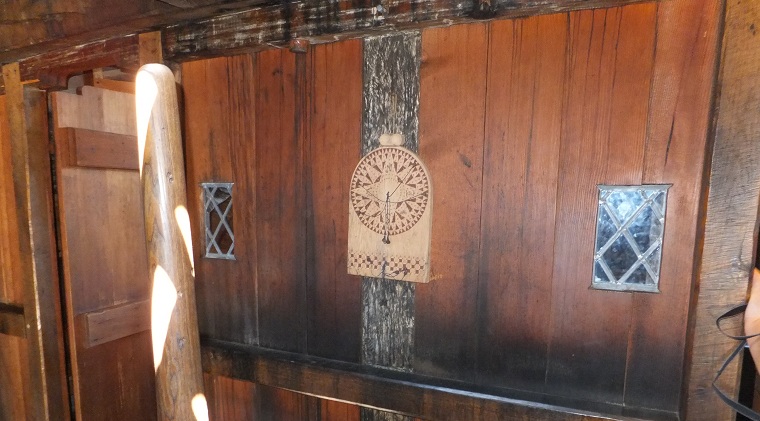
Great Cabin looking aft. The Traverse Board
where the compass course and speed that the course was steered was noted every 30 minutes.
by putting a peg with string in the appropriate hole on the compass face and the peg on the other end
of the string in a hole denoting speed at the bottom of the Traverse Board.
Speed over time and direction gives distance traveled in a direction,
what is needed in dead reckoning navigation.
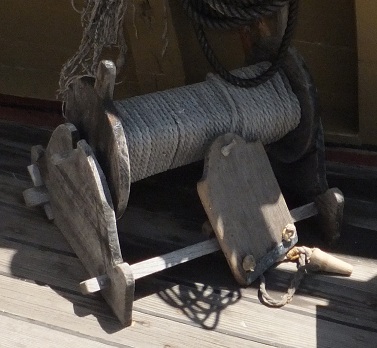 - - - - - - -
- - - - - - - 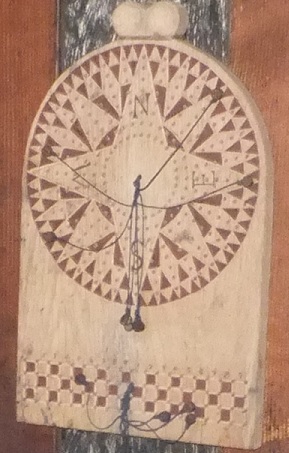
The Chip Log - actually a little wooden drogue - - - - - - - The pegs and strings in the photo above are not in correct order.
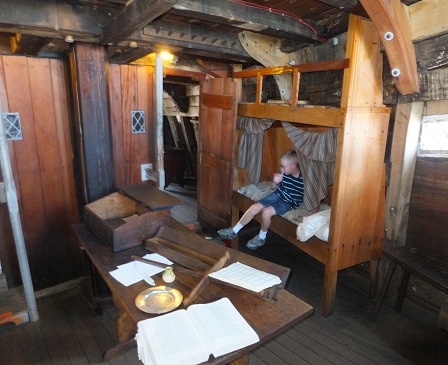
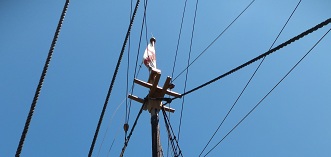
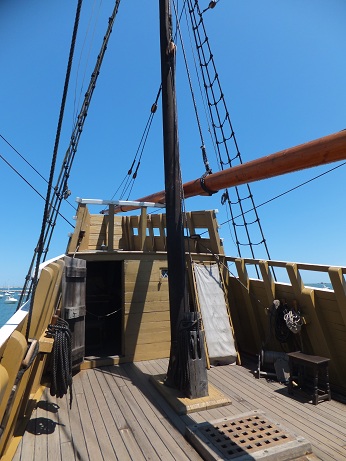
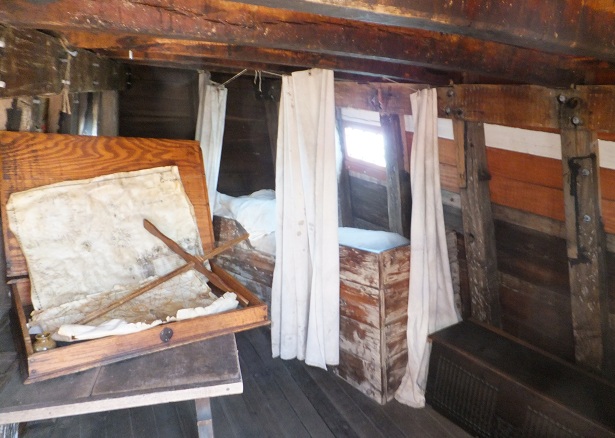
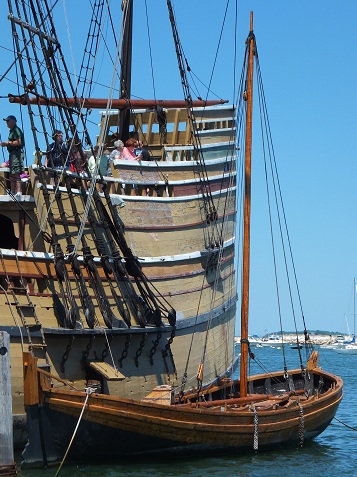 - - -
- - - 